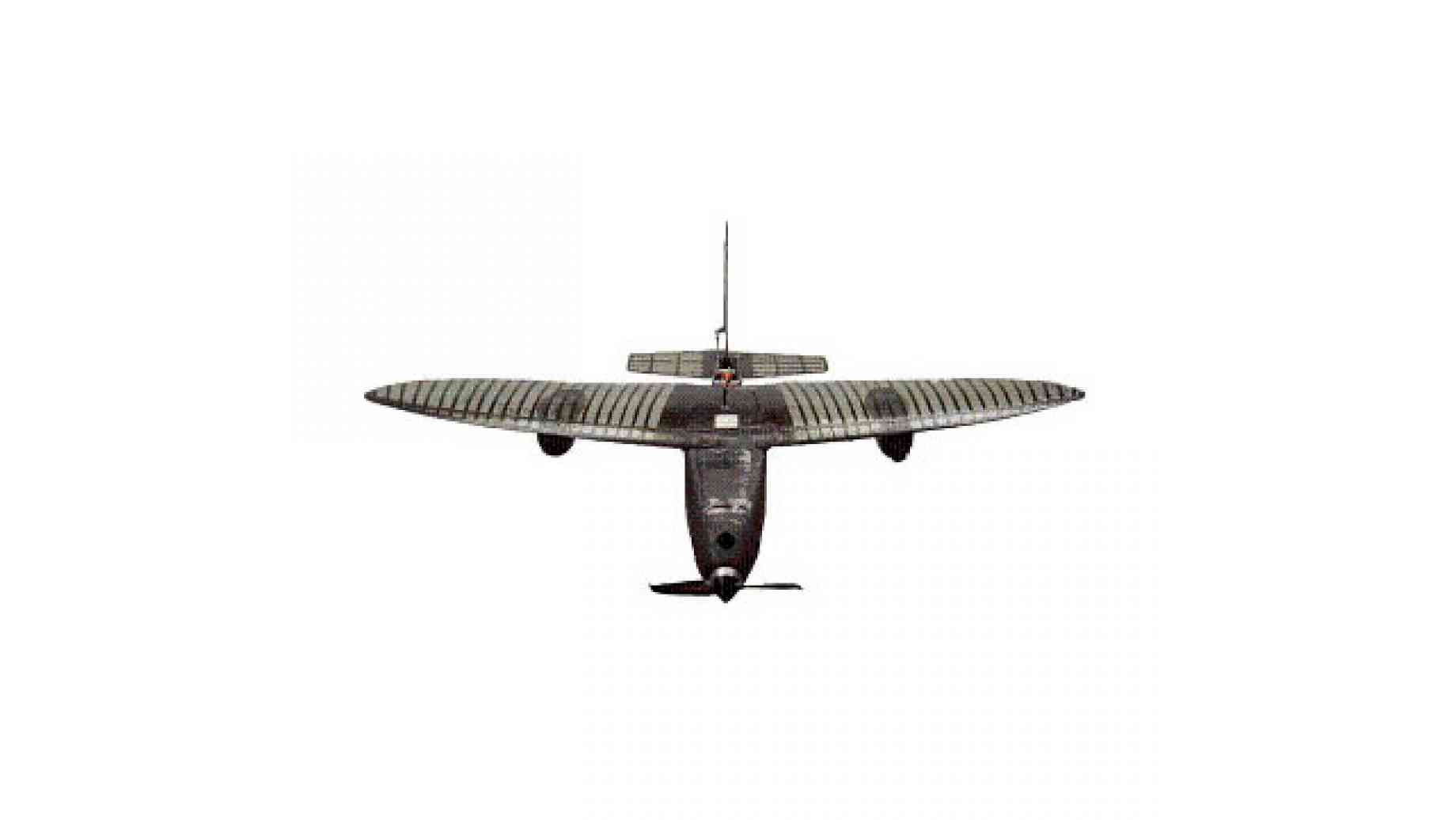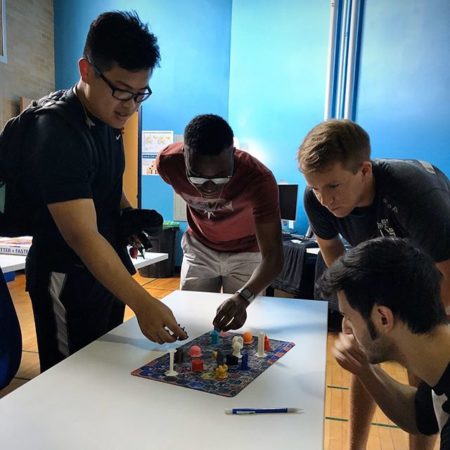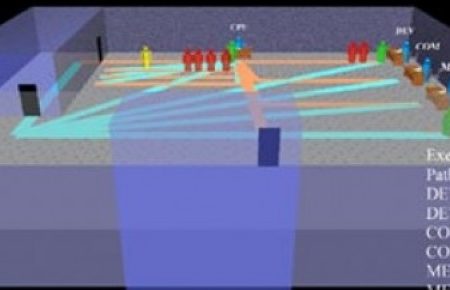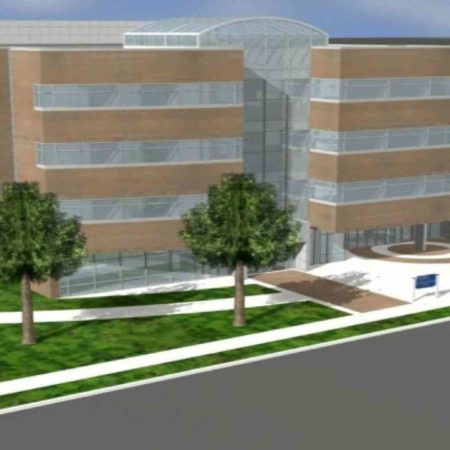Micro-Air-Vehicle Environment System
The UF Micro-Air-Vehicle (MAV) Virtual Environment systems provide a synthetic environment in which hardware MAVs can be virtually flight tested. The project, headed by Dr. Andrew Kurdila and Dr. Rick Lind of the UF Mechanical and Aerospace Engineering Department, is funded by the United States Air Force.
The facilities operate by measuring physical response of MAVs in a wind tunnel, estimating the MAVs’ inertial location in a virtual urban environment, flying the MAV in this environment, and viewing the virtual urban terrain in real-time.
Description
Micro-Air-Vehicle Virtual Environment System, A Hardware-in-the-Loop Experiment and Simulation Facility for Vision-Based Control of Micro-Air-Vehicles (MAVs)
The UF Micro-Air-Vehicle (MAV) Virtual Environment systems provide a synthetic environment in which hardware MAVs can be virtually flight tested. The project, headed by Dr. Andrew Kurdila and Dr. Rick Lind of the UF Mechanical and Aerospace Engineering Department, is funded by the United States Air Force.
The facilities operate by measuring physical response of MAVs in a wind tunnel, estimating the MAVs’ inertial location in a virtual urban environment, flying the MAV in this environment, and viewing the virtual urban terrain in real-time. The two compatible research facilities enable the study of:
1- Vision-processing algorithms for real-time identification of critical features required for coordinated guidance, navigation and control in complex 3D surroundings including urban environments.
2- Sensor fusion techniques that synthesize vision data and onboard micro-scale sensors that may include micro GPS processors, gyros, accelerometers, inclinometers, and speed sensors
3- Agile, autonomous closed-loop control methodologies that utilize rapid path planning updates based on vision-derived information and mission requirements.
4- Agile, autonomous closed-loop control methodologies that explore the tradeoff between vehicle control bandwidth, vision processing algorithm bandwidth, and the resulting stability of the coupled, closed loop system.
The Digital Worlds Institute’s former Associate Director, Andy Quay, designed and built the virtual environment hardware systems. The display system located on the UF campus consists of three rear-projected video screens and a PC cluster for image generation. The center screen supports passive stereoscopic (polarized eyewear) for use with additional scientific visualization applications. The projection screen from Stewart Filmscreen Corporation, the Projection Design F1 SXGA video projectors, and the CYVIZ projector stacking mounts were installed by VizEveryWhere. The display system located at the REEF site consists of six 52″ plasma screens. A dedicated server houses the 3D urban databases which is networked with a ten channel PC cluster for image generation. Dell sourced the computing resources for both facilities.
The virtual environment software is built upon MultiGen-Paradigm’s distributed VEGA, which allows the loading of the urban databases and synchronizes the video screens driven by the PC image clusters. Digital Worlds built one of the urban databases which spans several square miles.
There are now a total of four compatible visualization systems at UF, three on campus and one at the REEF. Two of the systems are housed in Digital Worlds’ own research labs, the REVE and SAGE. All of the systems allow other types of scientific and engineering visualization as well.
Mechanical and Aerospace Engineering
Design and implementation of Hardware in the Loop simulation of Autonomous Micro-Aerial Vehicles (MAV)
Digital Worlds Institute
Design and implementation of virtual environment system to allow testing of MAV design in nondestructive Virtual Space







